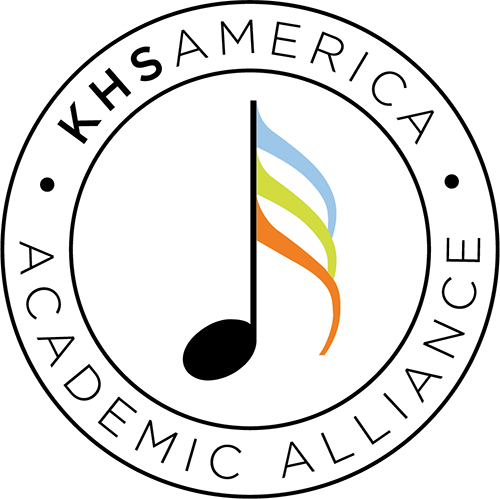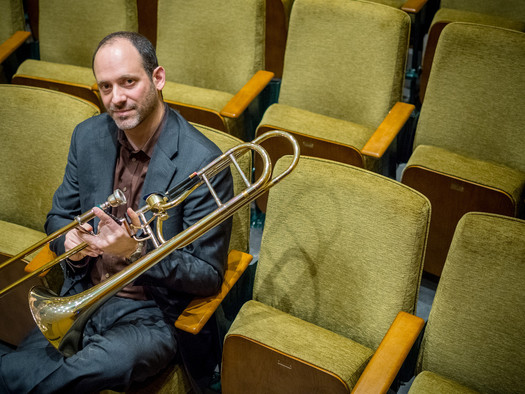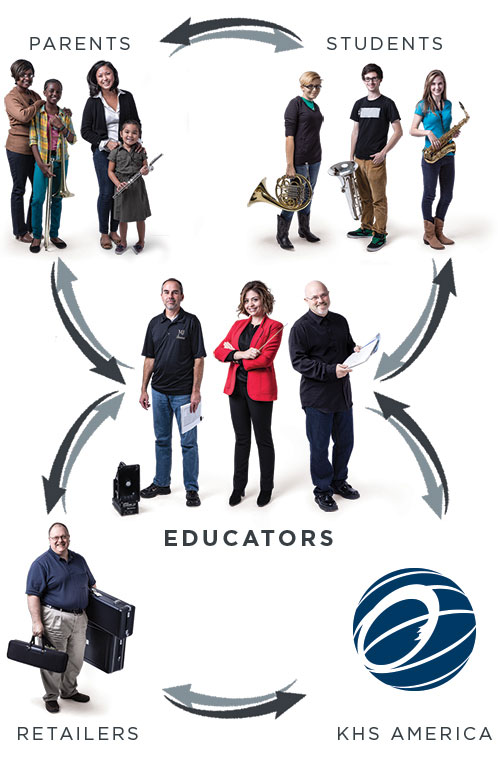Our nation has been deeply committed to closing the achievement gap that exists in our education system for almost 15 years. Achievement gaps occur when one group of students outperforms another group and the difference in average scores for the two groups is statistically significant. Most school systems use Hispanic-White and Black-White scores in mathematics and reading to determine the gap for these groups and to illuminate patterns and changes in these gaps over time. This gap is only based on test scores and has nothing to do with any other area of school curricula (or life, in general). I believe that this misguided view of test scores defining “achievement” has stunted both our children’s growth and our growth as a nation that values education.
Another achievement gap exists when instrumental music education enters a school’s curriculum. When students receive their instruments for the first time, they are divided into “haves” and “have-nots” immediately, and for different reasons. I call this the Creativity Achievement Gap. If left unaddressed, I believe this gap not only has serious consequences for students’ creative potential, but also for their personal progress and true achievement in life beyond school walls.
What causes this immediate handicapping of students’ potential as musicians and creative people?
- Lack of creative scheduling in schools. If we are to teach students to be creative, administrators must model the behavior first. Scheduling the arts into a school day that has mandates to meet and tests to administer is tricky, but extremely doable. Several model schools around the world do it every year — but there are not enough of them. A lack of creativity on behalf of administrators leads to pared-down music programs (or even programs that are cut), which then leads to an academic achievement gap.
- When instrumental music is offered in school once a week for a half hour, the onus on teaching shifts to the families, who are then forced to support their child’s practice for the other 6 days in order for them to be successful and stick with music. Most families are ill-equipped to do this. Schools that choose to schedule 5 days a week of instrumental music avoid this problem. With appropriate instruction time, teachers can fairly be held accountable for great teaching; programs then grow and improve, and fewer students quit as a result. If lessons are approached 5 days a week with the assumption that students may not touch their instruments beyond the classroom, children will drastically improve — even with no practice at home.
- Misguided perception. Much work needs to be done to cement in the minds of school leaders and legislators the concept of music as a core subject in school curricula. As long as administrators, teachers and parents mistakenly believe that music is a “frill” subject only for students who are “naturally gifted”, millions of children will be denied the opportunity to be educated to be creative.
- A “now go home and practice” mentality. Too many instrumental music teachers give students a “glimpse” of beginning concepts then simply tell them to go home and practice. Sometimes this is a reaction to poor scheduling — sometimes not. But without the proper tools and practice habits to get better at anything, students will become frustrated and want to quit. This is especially the case with students from low-income families, who will fall behind very quickly if it’s up to them alone to get better. It is the role of the music educator to give students ownership over their learning. As I mentioned above, teachers must plan for and teach each class thinking that none of the students will practice beyond class time — and if they do, it’s a bonus. This forces teachers to take more ownership over educating students and parents how to effectively work on their craft during the early years of study.
- Lack of parent engagement. This is the main reason I started this blog. If parents can teach their kids how to clean their room, they can effectively help them become proficient at a musical instrument. But most parents don’t because they either don’t think they are capable of it, or they don’t value music education the way they should in the first place. Parents need to treat music like any other academic subject; when their child starts playing an instrument, it should be approached with the same level of commitment as other school responsibilities. Parents also need to believe that even though they may not have been successful at playing an instrument when they were young, they are capable of helping their child just the same. Regardless of socioeconomic status, there are three types of beginner music parents: those who value music in education from the start; those who do not; and those who don’t know whether they should or not.
Creative scheduling in schools has the potential to neutralize many socio-economic challenges as it relates to the achievement gap. My experience with this was both humbling and life-changing. I had been teaching middle school band in Brooklyn, NY for a few years when the Department of Education “de-zoned” the city — students could attend almost any city school regardless of where they lived. Before the zoning shift, I taught band 3 days a week to a reasonably diverse population. After de-zoning, I noticed that my incoming 6th grade band consisted of almost 100% black and free/reduced lunch students. I am ashamed to admit that there was a huge part of me that thought that my award-winning program was going to take a serious hit. I was convinced that the level of support children received at home was going to seriously drop, as well. As it so happened, I had an incredible Principal who found a way to increase band to 5 days a week. I taught each class as if students would never touch their instrument outside the classroom, and the students turned out to be the most passionate and accomplished bunch I have ever taught. As embarrassed as I am to admit my initial biases, my lessons learned have driven everything I stand for in music education to this day.
All students are capable of become proficient at playing an instrument, which means that they are capable of becoming creative thinkers because of it — but most are being denied the opportunity. With more high stakes tests than ever, the irony is that most administrators are pulling low performing students out of the arts in order to give them double math/English test prep instead. If you think that students who go to school only to take double math and English fall behind and become disinterested in school faster than students who have music instruction each day, you would be right. This misguided educational strategy does not make for more creative human beings — we are being led down the wrong road.
What if the secret to narrowing the academic achievement gap was actually to provide more music instruction? Studies have been done about music and the academic achievement gap, and more are on the way. Researchers, administrators and parents are noticing a change in children who are studying music. It is clear that school-based music instruction has an impact on brain functioning, and I believe it is only a matter of time before we realize that it makes a huge difference in the academic success of students as well — especially lower-income ones. Schools can close the music education achievement gap rather quickly by hiring full-time music teachers, offering daily music instruction, assessing teachers fairly based on five days of instruction, and educating parents about how they can support their child’s instruction at home.
The Achievement Gap in this country has yet to be solved since No Child Left Behind was enacted in 2001 –the needle has barely moved. In the meantime, music programs have been cut in the interest of more time for test prep. Isn’t it time we realize that this way of educating our children doesn’t work? It’s time for our school system to embrace music education as a tool to close our Creativity Achievement Gap in order to close our academic gap, as well.
About the Author
A GRAMMY® nominated music educator, ANTHONY MAZZOCCHI has performed as a trombonist with the Los Angeles Philharmonic, New Jersey Symphony, San Diego Symphony, San Diego Opera, Riverside Symphony, Key West Symphony, in various Broadway shows and numerous recordings and movie soundtracks. Tony has served as faculty or as a frequent guest lecturer at The Juilliard School, Manhattan School of Music, New York University, and Mannes College of Music. He has taught grades 4-college and has served as a school district administrator of fine and performing arts. Tony has been a consultant for arts organizations throughout the NY/NJ area. He is currently Associate Director of the John J. Cali School of Music at Montclair State University in New Jersey and Co-Executive Director of the Kinhaven Summer Music School in Weston, Vermont with his wife, Deborah. To read more from this author, please see his book, The Music Parents’ Guide : A Survival Kit for the New Music Parent. It is available at http://www.amazon.com/dp/B00U6S974G.
The content of this Blog article or Banded Story is the intellectual property of the author(s) and cannot be duplicated without the permission of KHS America and/or the author(s). Standard copyright rules apply.



 We look forward to the evolution of this exciting program, and welcome feedback on how we can further enhance the work that you do in music education.
We are excited to offer your program the opportunity to join the KHS America Academic Alliance today.
We look forward to the evolution of this exciting program, and welcome feedback on how we can further enhance the work that you do in music education.
We are excited to offer your program the opportunity to join the KHS America Academic Alliance today.